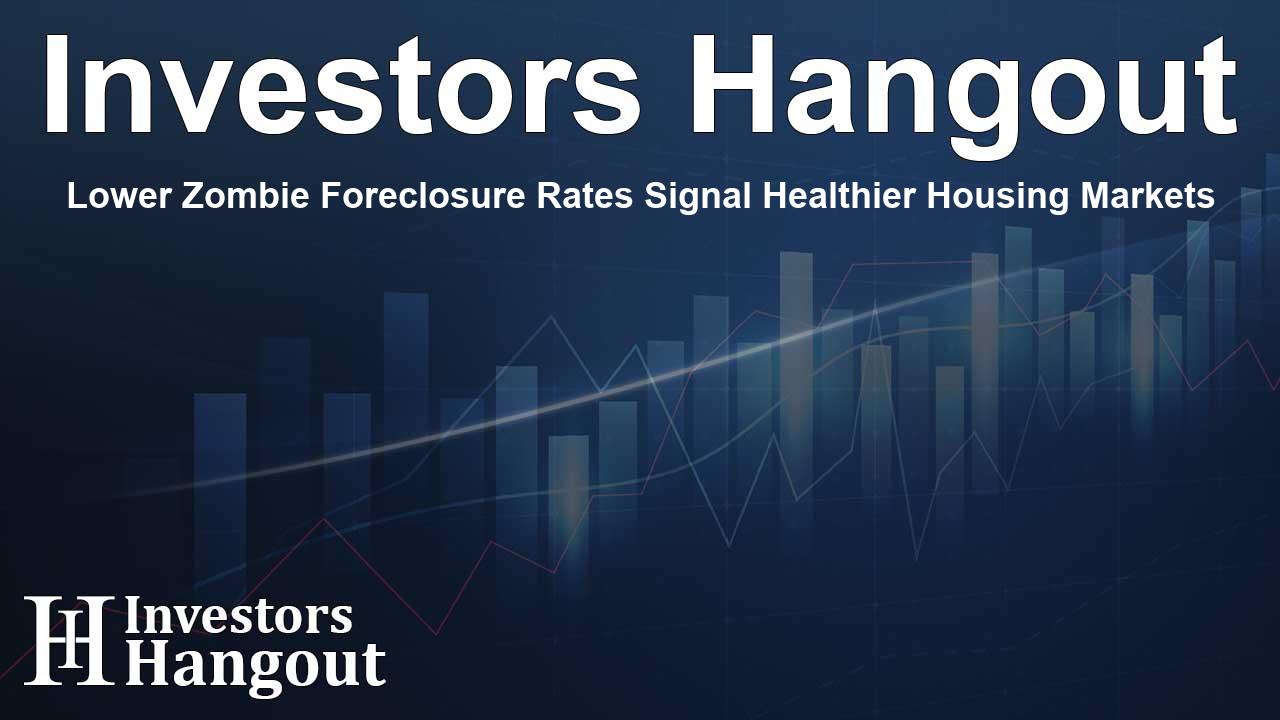Lower Zombie Foreclosure Rates Signal Healthier Housing Markets

Decline in Zombie Foreclosure and Vacancy Rates
Recent statistics indicate a noteworthy decrease in the national zombie foreclosure rate, now resting at 3.25 percent. This reduction symbolizes a slight yet significant improvement in the housing market dynamics. Simultaneously, the national vacancy rate has reached 1.3 percent, hinting at ongoing high demand for housing as properties are being utilized more effectively.
Key Insights from the Latest Data
The latest reports showcase that about 1.32 percent of residential properties across the country, translating to approximately 1.4 million homes, are currently vacant. This statistic represents a minor drop from the previous quarter's rate of 1.33 percent. This positive trend in vacancy rates suggests an ongoing demand for housing, as families and individuals seek to buy rather than rent homes.
Understanding Zombie Properties
The term "zombie properties" refers to homes that have been abandoned by their owners prior to the completion of foreclosure proceedings. In recent findings, 228,943 residential properties are undergoing foreclosure processes nationwide, with 3.25 percent, equating to around 7,448 homes categorized as zombie properties. This figure reflects a decrease from the previous quarter's zombie property rate of 3.38 percent, further indicating the market's gradual recovery.
Market Reacts to Continued Demand
Rob Barber, the CEO of ATTOM, emphasizes that these persistently low vacancy rates, maintaining around 1.4 percent for nearly four years, signify that despite record-high prices, the demand for homes remains strong. This scenario is a positive indicator for local housing markets, showcasing resilience even in the face of rising foreclosure filings.
The Evolution of Property Vacancies
State-level analysis presents intriguing variations. Some states have seen increases in zombie property rates, while others have experienced declines. States like Oklahoma and California have displayed a noticeable drop in the number of abandoned homes, suggesting improved management of foreclosure situations. Conversely, states such as Oregon have noted slight increases, indicating localized challenges within their housing markets.
Impact of Foreclosures Across States
The current trend factors in the regional characteristics of housing markets. In many states, particularly in the Midwest, the rate of abandoned homes is showing signs of stabilization or improvement. This variability showcases the differences in local economies and housing demands, where some areas may still be grappling with the repercussions of economic shifts.
Investor-Owned Properties and Vacancy Issues
When delving deeper into the data, investment properties show a slightly higher vacancy rate compared to owner-occupied homes. Approximately 3.5 percent of the 880,347 investor-owned properties in circulation are currently unoccupied, which is a compelling factor for investors and market analysts alike.
Looking Forward: What’s Next for the Housing Market?
As the report suggests, while the national trend appears favorable, localized responses to housing demand changes could heavily influence future developments in the housing sector. The coming months will be crucial as markets adapt and respond to fluctuating economic conditions, buyer behaviors, and potential regulatory changes concerning foreclosures.
Conclusion
The downward trend in zombie foreclosures alongside the gradual decrease in vacancy rates portrays a significant shift in the housing market’s stability. As consumers continue seeking homeownership, understanding these trends becomes imperative. This evolving landscape shall guide potential buyers and investors on their journey through the housing market.
Frequently Asked Questions
What are zombie properties?
Zombie properties are homes that have been abandoned by their owners and remain in foreclosure proceedings.
What does the current vacancy rate indicate?
The current national vacancy rate of 1.3 percent indicates a high demand for residential properties across the United States.
How are foreclosure rates affecting the market?
Decreasing foreclosure rates, specifically zombie properties, suggest an improving housing market and greater stability for potential buyers.
Why is the demand for housing still strong?
Despite high property prices, the desire for homeownership remains strong among individuals and families, reflecting ongoing confidence in the housing market.
What are the implications for investors in the housing market?
Investors should monitor vacancy and foreclosure trends closely as they signify potential investment opportunities and risks in local markets.
About The Author
Contact Dylan Bailey privately here. Or send an email with ATTN: Dylan Bailey as the subject to contact@investorshangout.com.
About Investors Hangout
Investors Hangout is a leading online stock forum for financial discussion and learning, offering a wide range of free tools and resources. It draws in traders of all levels, who exchange market knowledge, investigate trading tactics, and keep an eye on industry developments in real time. Featuring financial articles, stock message boards, quotes, charts, company profiles, and live news updates. Through cooperative learning and a wealth of informational resources, it helps users from novices creating their first portfolios to experts honing their techniques. Join Investors Hangout today: https://investorshangout.com/
The content of this article is based on factual, publicly available information and does not represent legal, financial, or investment advice. Investors Hangout does not offer financial advice, and the author is not a licensed financial advisor. Consult a qualified advisor before making any financial or investment decisions based on this article. This article should not be considered advice to purchase, sell, or hold any securities or other investments. If any of the material provided here is inaccurate, please contact us for corrections.
